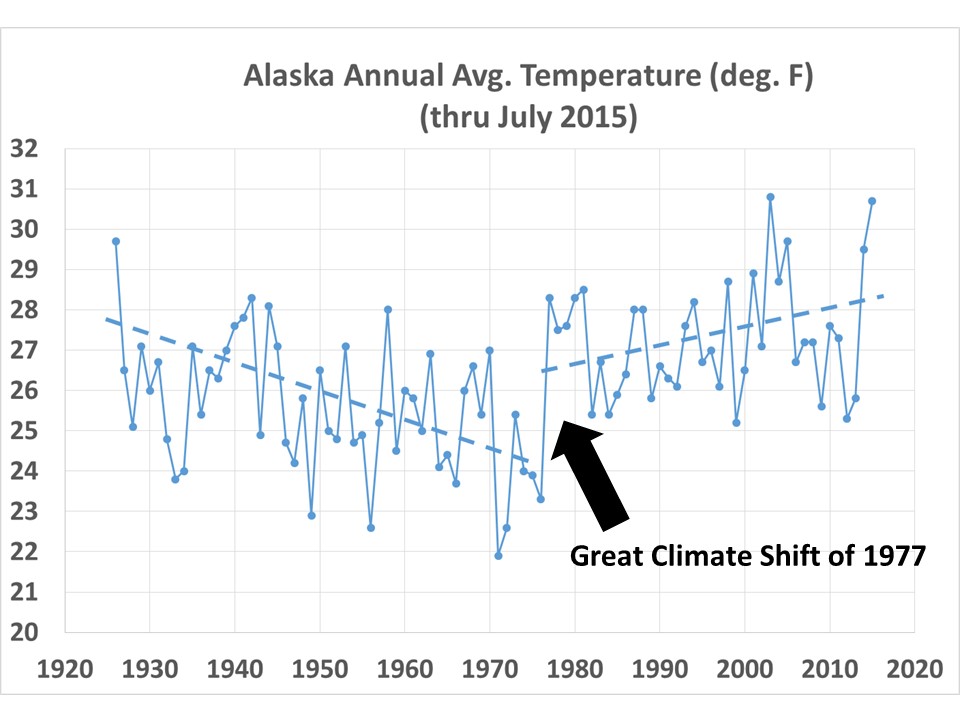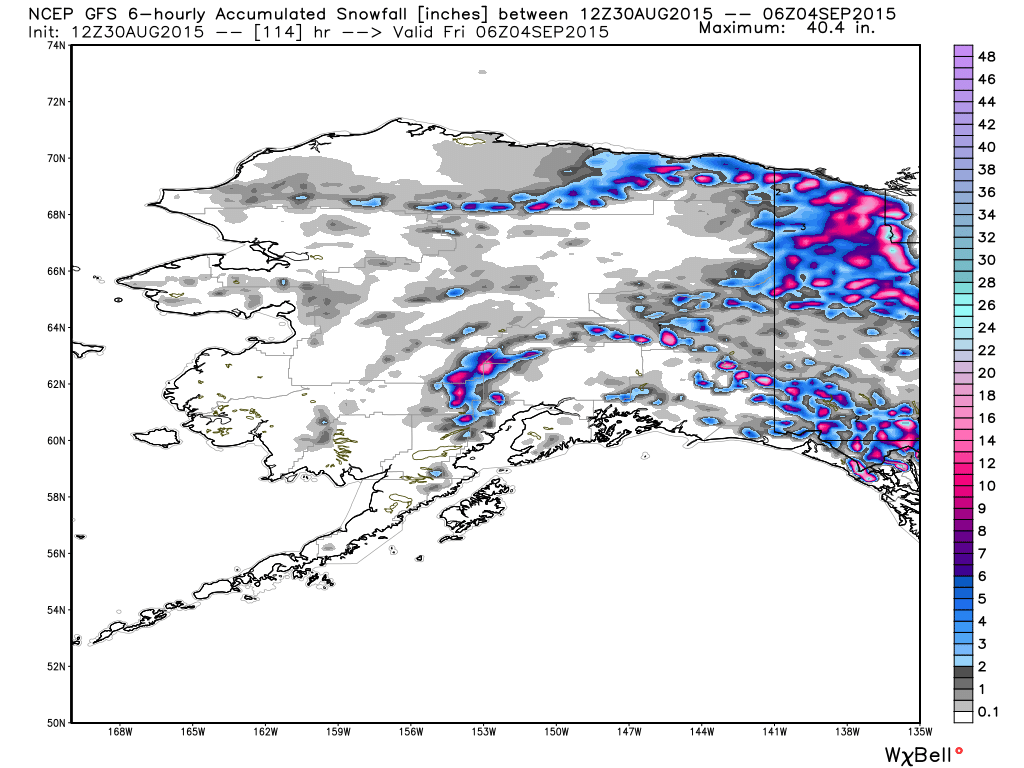When President Obama visits Alaska this week to campaign for a new international agreement to fight global warming climate change, Alaska will be experiencing colder than normal weather and forecast summer snows, as seen in this WeatherBell.com graphic of forecast total snowfall by Friday:
Besides this latest example of the Gore Effect, the dirty little secret is that the climate is always changing, and what better place to illustrate the role of Mother Nature (not humans) than in Alaska?
Extreme Weather
Alaska weather matches its geography – extreme. Temperatures there have ranged from 100 deg F (in 1915) to 80 below zero F (in 1971). Summer days are so long that they can grow pumpkins weighing over 1,000 lbs. Nevertheless, yearly average temperatures are actually below freezing — even in the warmest years.
Glaciers were Already Retreating Before 1900
The supposed poster child glacier for global warming in Alaska is Mendenhall Glacier…except that it had already retreated one mile by the early 1900s, long before human greenhouse gas emissions could be blamed.
Furthermore, its retreat is uncovering large tree stumps approximately 1,000 years old, coincidentally coinciding with the (naturally-caused) Medieval Warm Period, back when the Vikings were able to farm in Greenland.
Which begs the question: How could it have been warm enough to grow giant trees 1,000 years ago in an area now covered in ice? We don’t know why it was so warm 1,000 years ago—climate scientists don’t like to talk about it because they can’t explain it — but for some reason they are sure that your SUV is causing current warmth.
Alaska’s Recent Warmth is Mostly Due to the Pacific Decadal Oscillation
NOAA’s official average temperature product for Alaska, even after they’ve made innumerable and controversial adjustments, shows cooling from the 1920s to the late 1970s, then sudden warming associated with the Great Climate Shift of 1977:

NOAA official Alaska average annual temperatures, (Aug. to July) through July 2015 (NCDC Climate at a Glance).
This shift was due to a natural reversal of the Pacific Decadal Oscillation, a 60 year cycle which affects the atmospheric steering currents in Alaska, determining whether cold polar air or warm Pacific air tends to win out as the two air masses continually battle for control over Alaska weather.
Alaskans are used to tremendous extremes in weather throughout the year. The tree stump evidence by itself suggests it was warmer there 1,000 years ago than today.
Yet, President Obama will no doubt wax eloquent about how all weather and glacier changes in Alaska (1) have been brought on by humans, and (2) are bad. I’m sure this is what’s taught in schools now, and many will believe it.
But don’t you believe it.

 Home/Blog
Home/Blog





What it indicates, due to changing patterns of winter and less snow and longer, hotter summers, is how fast the glacier is retreating.
President Obama, in Alaska to address climate change, visited the melting Bear Glacier fb88 at Kenai Fjords park on Tuesday.